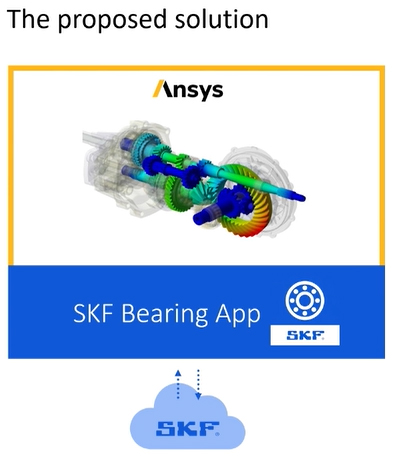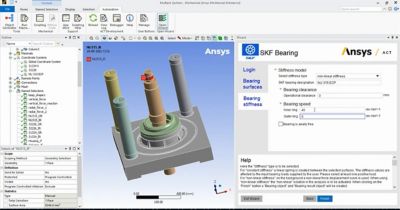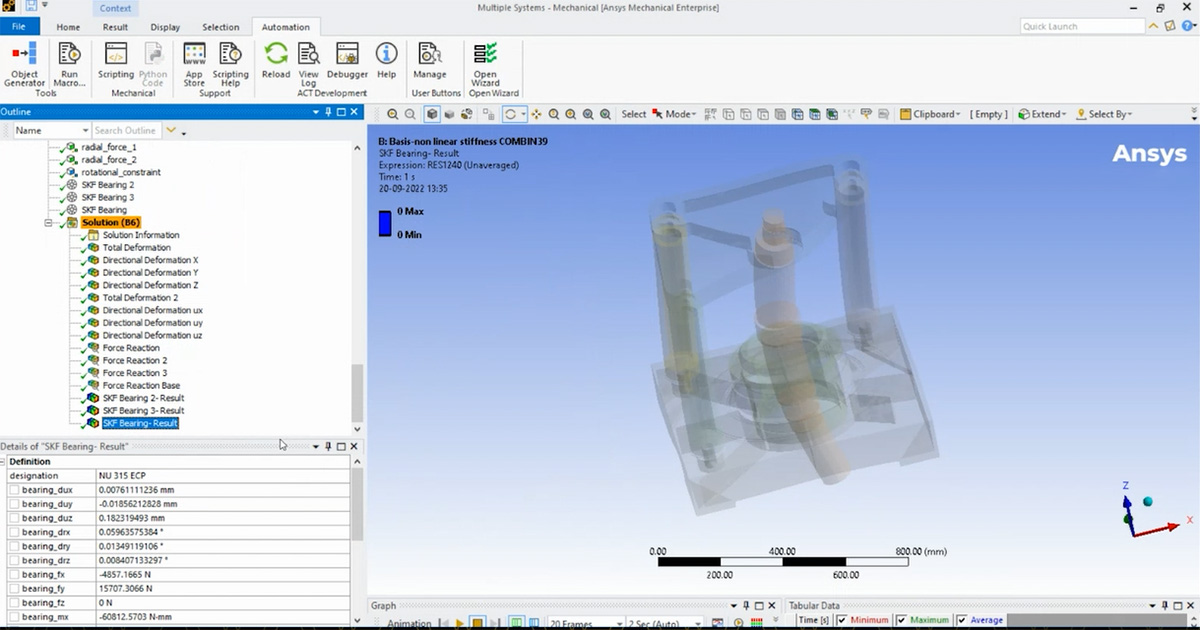-
-
Software gratuito per studenti
Ansys potenzia la nuova generazione di ingegneri
Gli studenti hanno accesso gratuito a software di simulazione di livello mondiale.
-
Connettiti subito con Ansys!
Progetta il tuo futuro
Connettiti a Ansys per scoprire come la simulazione può potenziare la tua prossima innovazione.
Paesi e regioni
Customer Center
Supporto
Partner Community
Contatta l'ufficio vendite
Per Stati Uniti e Canada
Accedi
Prove Gratuite
Prodotti & Servizi
Scopri
Chi Siamo
Back
Prodotti & Servizi
Back
Scopri
Ansys potenzia la nuova generazione di ingegneri
Gli studenti hanno accesso gratuito a software di simulazione di livello mondiale.
Back
Chi Siamo
Progetta il tuo futuro
Connettiti a Ansys per scoprire come la simulazione può potenziare la tua prossima innovazione.
Customer Center
Supporto
Partner Community
Contatta l'ufficio vendite
Per Stati Uniti e Canada
Accedi
Prove Gratuite
ANSYS BLOG
January 30, 2023
Bearing Calculations No Longer a Lot to Bear with Easy-to-Use Automation Tool
Nuts and bolts get a lot of attention for keeping things together, but it is bearings that keep things moving. In mechanical engineering, bearings are machine elements that help balance motion and reduce friction between moving parts. For example, bearings can manipulate the linear movement of a part or its rotation around an axis and also prevent movement by controlling vectors that affect the part.
With so much power in such a small element, it’s no wonder that bearing calculations are one of the most challenging aspects of mechanical design: Precision is essential. It is necessary to accurately model bearings for overall design success, yet their varied characteristics and geometric details are not easily attainable by engineers and designers.
As a leading global bearings manufacturer, SKF has developed a solution with SKF Bearing, a free application programming interface (API) that alleviates the burdensome process of bearing selection, analysis, and simulation by providing access to accurate stiffness data on more than 10,000 bearing designations.
SKF Bearing, which is designed for and embedded in Ansys Mechanical, simplifies and automates the bearing selection process during structural finite element analysis (FEA), democratizing simulation for any user from beginner to expert.
Accurately and Automatically Find Your Bearings
Based in Sweden with offices worldwide, SKF provides solutions that reduce friction and carbon dioxide (CO2) emissions, while simultaneously increasing machine uptime and performance. SKF doesn’t just focus on development but cultivates intelligent and clean growth by investing heavily in research and development (R&D) with a strong concentration on reliability and sustainability.
Their main products and services involve the rotating shaft and include bearings, seals, lubrication management, artificial intelligence (AI) systems, and wireless condition monitoring. Also, in addition to physical parts and hardware, SKF develops bearing software and modeling solutions, including APIs that integrate with third-party tools to help customers simulate bearings more accurately and easily.
Hedzer Tillema, a product manager in the engineering software department at SKF, presented one of the company’s latest APIs at Ansys’ Level Up 3.0 engineering simulation conference.
SKF Bearing was developed using the Ansys Application Customization Tool Kit (ACT), which enables teams to automate workflows by creating customized guided processes referred to as wizards. These wizards enable a step-by-step, accessible interface for any user and tailor the application for selected tasks and programs. As mentioned above, SKF Bearing is designed to simplify bearing modeling and FEA simulation in Mechanical.
Tillema says SKF’s continued simulation integration supports a recent industry trend to “shift to the left,” which means engineers and designers are shifting simulation and virtual testing earlier in the development cycle. By introducing simulation as an active and early part of development instead of a late-stage verification tool, development teams gain critical insights sooner to inform designs, prevent design failure, and shorten time to market.
Through simulation integration and joint solutions, SKF empowers more engineers and designers to adopt digital transformation and simulation.
According to Tillema, the three top challenges in bearing modeling:
- Highly nonlinear components that have a significant impact on whole systems, which might be hard to predict without detailed analysis
- Extensive variety of bearing types
- Detailed micro-geometry and properties that have a considerable effect on whole systems. Additionally, such properties are considered confidential intellectual property and therefore are typically unavailable when designing bearing models.
Consequently, traditional methods for bearing modeling involve multiple trial-and-error attempts that are often time-consuming and costly.

SKF executives presented the SKF Bearing application at the Level Up 3.0 engineering simulation conference.
“To overcome these challenges, what is our proposal?” Tillema asked Level Up 3.0 conference attendees. “The SKF Bearing app is our proposal and that takes the bearing modeling burden out of the simulation engineers’ hands.”
At this point, the application is not intended to simulate a rolling bearing in detail or to study the effect of bearing performance. Instead, SKF Bearing is designed to assist in the accurate representation of bearing stiffness to enhance and alleviate bearing simulation.
Streamline Bearing Analysis in 1, 2, 3

Abhinand Pusuluri, a software developer at SKF, demonstrated the SKF Bearing application at the Level Up 3.0 conference using SKF’s NU 315 ECP, a single row cylindrical roller bearing.
SKF Bearing calculates the measurements you need for your model with just a few clicks. The bearing is modeled with a rigid ring approach while the app communicates with an SKF cloud server to obtain an accurate representation of the stiffness of a real bearing. Ensuring authenticity, the representation considers the detailed contacts between the rolling elements and raceways of the bearing as well as its full micro-geometry.
As a result, SKF Bearing provides a number of advantages, including:
- Streamlined bearing analysis and simulation with ease of use
- Access to more than 10,000 bearing designations, which contain all common bearing types
- Cloud-based, online tool guarantees up-to-date bearing data, including both macro- and micro- geometry, which helps represent the most accurate bearing stiffness
As an added layer of precision, the SKF Bearing app is equipped with two modeling approaches:
- A nonlinear stiffness model mainly used for static analyses in which the final bearing loads can be retrieved
- A constant stiffness model mainly used for dynamic analyses, such as harmonic vibrational frequency analysis
Additionally, you can select bearing surfaces and enter the coordinate systems of the bearings that you wish to use in your model. To make it even easier, you can use SKF Bearing Select, an online calculation tool from SKF, to find a list of bearings most suitable for your project. You can also enter unique parameters such as clearance and speed.

Bearing simulation results are generated in moments using the SKF Bearing application and Ansys Mechanical.
Get Moving with SKF Bearing in Ansys Mechanical
Bearing stiffness can have a major impact on machine and system behavior. SKF Bearing enables the easy creation of rolling bearing models to represent accurate bearing stiffness with an easy-to-use wizard and direct access to more than 10,000 bearing designations in the SKF catalog.
To get started, download SKF Bearing for free at the Ansys store.
For more information and a step-by-step demonstration, watch SKF’s presentation at Level Up 3.0.